
Summer pastures
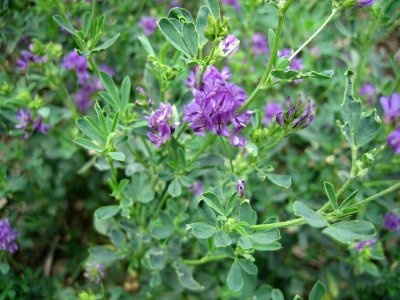 Bluegrass
or ryegrass with white clover makes a great spring and fall
pasture, but where do you put your hungry critters during the summer
slump? Gene Logsdon offers a slew of possibilities, ranging from
semi-perennial legumes to warm season grasses and even weeds.
Bluegrass
or ryegrass with white clover makes a great spring and fall
pasture, but where do you put your hungry critters during the summer
slump? Gene Logsdon offers a slew of possibilities, ranging from
semi-perennial legumes to warm season grasses and even weeds.
In his own pasture
setup, Logsdon focuses on alfalfa, red clover, and ladino clovers to
fill in the summer lull, planting these short-lived perennial legumes
in rotation with winter crops like grains. When choosing one of
these legumes, keep in mind that alfalfa is the most drought tolerant
and produces more biomass than any other legume if it's happy, but that
it hates clay and can't be planted 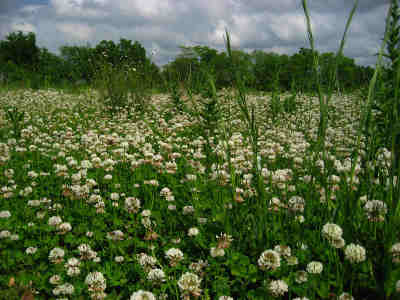 in the same spot for several years after the
stand dies out. Red clover outperforms alfalfa on heavy
soils and in cold, moist climates, finding favor in the Corn Belt, the
Northeast, and the mid-South. Ladino
clover is the
most palatable of these tall legumes and can handle heavy, wet soil,
but produces less hay per acre, won't survive drought, and requires
reseeding most often.
in the same spot for several years after the
stand dies out. Red clover outperforms alfalfa on heavy
soils and in cold, moist climates, finding favor in the Corn Belt, the
Northeast, and the mid-South. Ladino
clover is the
most palatable of these tall legumes and can handle heavy, wet soil,
but produces less hay per acre, won't survive drought, and requires
reseeding most often.
All three legumes are
managed about the same. In the Deep South, red and ladino clovers
are grown as annuals, but elsewhere the legumes are perennials that
should be surface seeded in winter, then given several months to get
established. You can begin to cut or 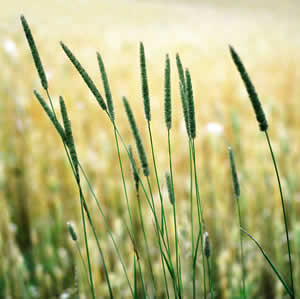 graze once the plants begin
to bloom, then continue to cut or graze at the same stage until
September, at which point the plants must be allowed to put on some
mass so they will survive the winter.
graze once the plants begin
to bloom, then continue to cut or graze at the same stage until
September, at which point the plants must be allowed to put on some
mass so they will survive the winter.
Timothy can be mixed with the
legumes (especially red clover), but if you combine the plants, it's
best to gauge grazing or cutting time by the legume since timothy grows
more slowly. Orchardgrass is sometimes mixed with
alfalfa in the lower Corn Belt and mid-South, but the grass becomes
unpalatable quickly in the spring if you're not careful. Finally,
smooth
bromegrass is
often combined with alfalfa in the North since the grass and legume
have similar drought resistance.
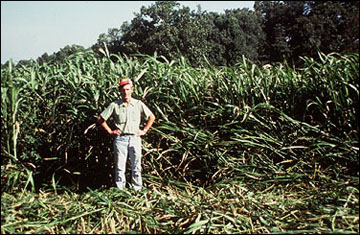 At the other end of the
country, you might consider planting a paddock or two to warm season
grasses for the summer months. Quackgrass, crabgrass, and foxtail are weeds that spring up all
by themselves in cultivated ground, while bermudagrass (also a weed by many folks'
estimation) will take over in the Deep South. Sorghum-sudangrass
hybrid is often
planted for high production pastures in midsummer, but the leaves are
toxic when less than a foot tall, which gives the plant limited utility
for grazers like chickens who like tender forage. Although a
legume instead of a grass, lespedeza is a possibility in the
South, but can be a problem weed that becomes unpalatable if not
managed carefully.
At the other end of the
country, you might consider planting a paddock or two to warm season
grasses for the summer months. Quackgrass, crabgrass, and foxtail are weeds that spring up all
by themselves in cultivated ground, while bermudagrass (also a weed by many folks'
estimation) will take over in the Deep South. Sorghum-sudangrass
hybrid is often
planted for high production pastures in midsummer, but the leaves are
toxic when less than a foot tall, which gives the plant limited utility
for grazers like chickens who like tender forage. Although a
legume instead of a grass, lespedeza is a possibility in the
South, but can be a problem weed that becomes unpalatable if not
managed carefully.
Corn isn't exactly a pasture
plant, but Logsdon suggests a method to work the grain into your
pasture rotation without harvesting any of the ears yourself. You
can turn lambs into the pasture to eat the lower leaves and weeds when
the corn is above their heads, then replace them with hogs who harvest
the grain when the plants are mature. Finally, sheep and cows
munch on the fodder (and dropped ears of corn) over the winter.
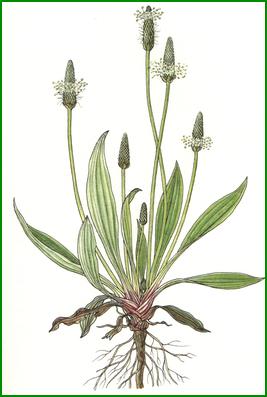 In his chapter on weeds,
Logsdon tosses out the idea of a temporary ley for summer
pasture. Newman Turner's Fertility Pastures and Cover Crops recommends planting the
following combination for midsummer:
In his chapter on weeds,
Logsdon tosses out the idea of a temporary ley for summer
pasture. Newman Turner's Fertility Pastures and Cover Crops recommends planting the
following combination for midsummer:
- Alfalfa (6 pounds per acre)
- Chicory (6 pounds per acre)
- Timothy (6 pounds per acre)
- White clover (3 pounds per acre)
- Burnet (3 pounds per acre)
- Late-flowering red clover (2 pounds per acre)
- Meadow fescue (4 pounds per acre)
- Perennial ryegrass (12 pounds per acre)
- American sweet clover (2 pounds per acre)
- Sheep's parsley (2 pounds per acre)
- Carraway (1 pound per acre)
- Narrow-leaved plantain (1 pound per acre)
- Broad-leaved plantain (1 pound per acre)
Although Logsdon laughs
at the idea of finding seeds for notorious weeds like plantain, the
permaculturist might keep an eye on weedy spots for midsummer forage.
| This post is part of our All Flesh is Grass lunchtime series.
Read all of the entries: |
Want more in-depth information? Browse through our books.
Or explore more posts by date or by subject.
About us: Anna Hess and Mark Hamilton spent over a decade living self-sufficiently in the mountains of Virginia before moving north to start over from scratch in the foothills of Ohio. They've experimented with permaculture, no-till gardening, trailersteading, home-based microbusinesses and much more, writing about their adventures in both blogs and books.
Want to be notified when new comments are posted on this page? Click on the RSS button after you add a comment to subscribe to the comment feed, or simply check the box beside "email replies to me" while writing your comment.
